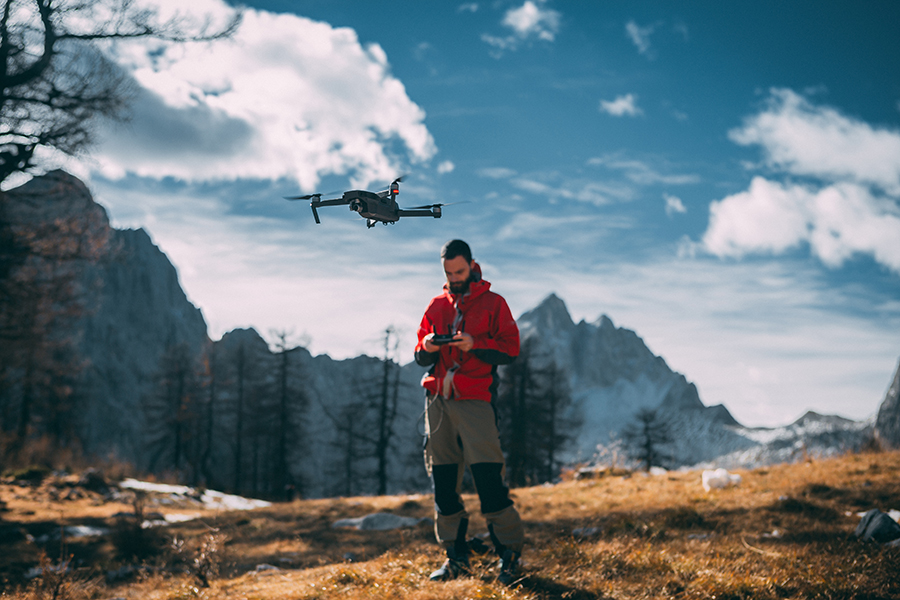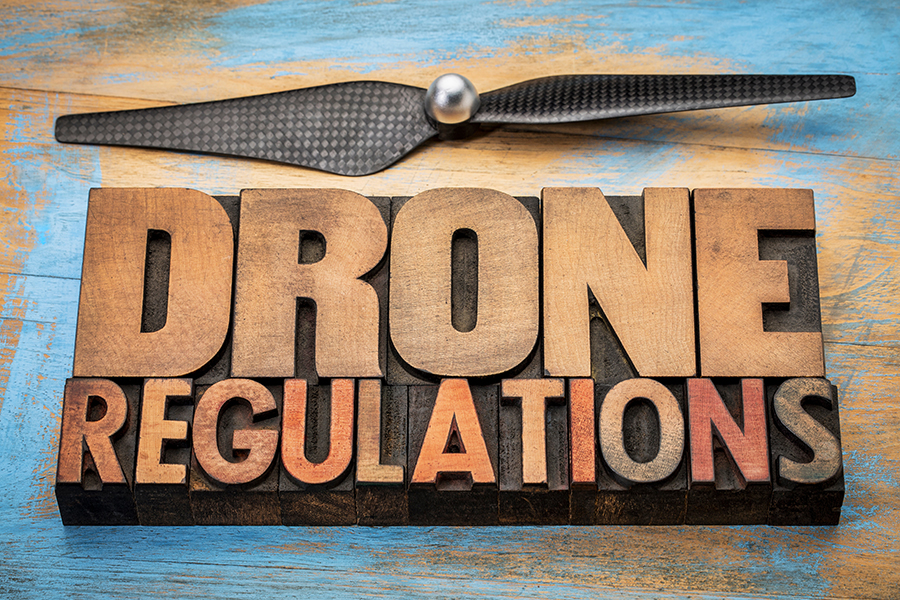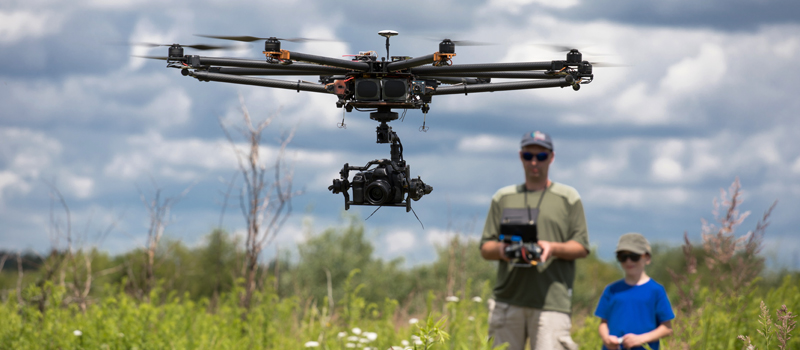-
What are CBOs and why are they important?
-
What are fixed sites?
-
What Advisory Circular 91-57 states
- Basic safety
- FPV flight
- Maintenance, inspection, and minimum conditions
- Night flight
- Documentation and reporting
- Emergency procedures
- Determining the medical condition of the drone pilot
-
What this means for recreational drone flight
-
The challenges of compliance and enforcement
-
Final thoughts
There is a lot of stuff going on right now in terms of developments in drone flight laws both for recreational and commercial drone pilots. The latest Advisory Circular released by the FAA makes changes to Section 44809 or the “Exception for limited recreational operations of unmanned aircraft.”
More specifically, Advisory Circular 91-57 creates the guidelines for the recognition of Community-Based Organizations (CBOs). A draft of this document was released last year but the recent version is considered final. This has been a long time coming and should be beneficial for recreational drone pilots. What are CBOs, why are they important, and what exactly does the new Advisory Circular say?
What are CBOs and why are they important?
Community-Based Organizations (CBOs) were legally defined in Section 44809. CBOs are not a new concept – they have been around long before drones were popular and have provided a venue for aviation hobbyists to engage with other community members and learn about the finer points of the hobby.
AC 91-57 provides a short list of descriptive statements on CBOs that echo those that were already written in Section 44809:
- As described in Section 501 (c3) of the Internal Revenue Code of 1986
- Exempt from tax under Section 501 (a) of the Internal Revenue Code of 1986
- Has a mission to demonstrably further model aviation
- Provides a comprehensive set of safety guidelines for all aspects of model aviation addressing the assembly and operation of model aircraft and that emphasize safe aeromodelling operations within the national airspace system and the protection and safety of individuals and property on the ground, and may provide a comprehensive set of safety rules and programming for the operation of unmanned aircraft that have the advanced flight capabilities enabling active, sustained, and controlled navigation of the aircraft beyond visual line of sight of the operator
- Provides programming and support for any local charter organizations, affiliates, or clubs
- Provides assistance and support in the development and operation of locally designated model aircraft flying sites.
Although CBOs have been around for decades, they now have a more important role to play in recreational drone flight as defined by Section 44809. According to this rule, recreational drone pilots must comply with the safety guidelines of an officially recognized CBO on top of the restrictions that have already been indicated in Section 44809 by the FAA.
Section 44809 did not initially have the guidelines and standards for the recognition of CBOs, so no CBOs were officially recognized for about four years since it came into law. These guidelines have now been made available via the new Advisory Circular.
What are fixed sites?
Another important implication of the guidelines is that officially recognized CBOs can now submit applications for “fixed sites.” This is not a required step for CBO recognition but is one of the privileges available to a CBO that has been recognized by the FAA.
Fixed sites are valuable in that they provide areas for recreational drone pilots to fly within controlled airspace without having to apply for an airspace authorization. When applying for a fixed site, CBOs must specify if they plan on conducting unique operations such as flying drones that weigh more than 55 pounds or conducting drone races. CBOs must also present safety guidelines for their fixed site which they will be responsible for implementing once the request has been approved.
There actually is already a fairly long list of fixed sites for drone flight, most of which are under the AMA. Section 44809 merely extends the authority to request fixed sites to all duly recognized CBOs.
What Advisory Circular 91-57 states
According to Section 44809, CBOs must provide a set of safety guidelines that should address the assembly and operations of model aircraft for safe recreational operations. AC 91-57 specifies a baseline for developing these safety guidelines. However, CBOs can provide guidelines that go beyond the requirements of AC 91-57, especially if they intend to partake in unique operations.
The list of safety guidelines is quite long, so we’re breaking it down into sections:
Basic safety
Under this section, we are lumping together the “common sense” rules. These include restrictions on arming drones, loading them with hazardous materials, and flying them in a careless or reckless manner. The FAA also recommends that CBOs include a statement in their safety guidelines that reminds recreational drone pilots to comply with all applicable federal rules on top of the CBO guidelines.
An interesting item here is that the section mentions settings restrictions on operations over people – the first time that flight over people was expressly mentioned in Section 44809 as being restricted for recreational drone flight.
FPV flight
AC 91-57 has a long section detailing the recommended guidelines for FPV drone flight. These are very similar to the rules found in Part 107 – visual observers co-located with the drone operators are required during FPV flight, there must be a pre-planned communications procedure, and allowing only the momentary use of visual aids.
Maintenance, inspection, and minimum conditions
The FAA recommends setting standards for the maintenance and inspection of drones to ensure that they are in proper condition for every flight. Again, the FAA provides a fairly long list of recommended items for a pre-flight checklist. The recommended items include checking for software updates, flight-critical systems, various moving parts like servos and rotors, control links, guidance systems, external loads, and suitability of flight area. The FAA recommends that safety guidelines be based on the recommendations of the manufacturer.
Night flight
Section 44809 requires that a visual line of sight be maintained even when flying drones at night. This means that drones should be equipped with anti-collision lights that are visible from 3 statute miles away. The lights should be arranged in a manner that allows drone pilots to determine the orientation and flight path of the aircraft. CBOs can also allow the flight of drones without anti-collision lights as long as they are done in sites that are sufficiently illuminated.
CBOs are highly encouraged to help educate or train drone pilots to be aware of the physiological challenges of night operations. This measure is quite similar to how the Part 107 knowledge test was expanded to account for night operations.
Documentation and reporting
The FAA also recommends that CBOs implement the reporting of “safety incidents” in their guidelines. A “safety incident” is defined as an occurrence associated with the operation of the aircraft that affects or could affect the safety of operations. These reports can then be used by the CBOs as the reference for identifying the risks associated with drone operations and enacting the appropriate mitigating measures.
Emergency procedures
The FAA also recommends that CBOs come up with procedures for when there is an actual or impending loss of control of a drone or if an operational limitation has been violated. AC 91-57 provides a few examples of emergencies such as parts breaking off, loss of propulsion, loss of radio signals or control signals, and unexpected weather.
Determining the medical condition of the drone pilot
The FAA recommends having safety guidelines that will help ensure that a drone operator is physically and mentally fit to conduct safe drone operations. This involves screening against alcohol and drug use. The FAA recommends implementing the IMSAFE checklist, a staple feature of aviation safety.
These recommendations can be adopted as deemed necessary by the CBO. It is the responsibility of the CBO to keep safety guidelines current and make them readily available to FAA personnel upon request.
With these guidelines set, the FAA will now be accepting applications for CBOs and advise that it may take 90 days to process each application.
What this means for recreational drone flight
If you’re a recreational drone pilot, these changes will likely change how you fly your drone. Instead of complying only with the nine rules originally cited in Section 44809, you will now have to look for a CBO with the relevant safety guidelines that will allow your planned operations.
The original rules for recreational drone flight under Section 44809 were simple – maybe a little too simple. It did not mention flying at night, over people, weaponizing drones, or flying in a reckless manner. However, the recommended safety guidelines may have over-complicated things with requirements like pre-flight inspection, safety incident reporting, and other items that mirror the standards under Part 107.
It’s probably still too early to tell how this works out, and we will have to reserve judgment until the FAA starts recognizing CBOs.
The challenges of compliance and enforcement
Adding a long list of safety guidelines can prove to be challenging, both in terms of compliance and enforcement. This does not mean that regulating recreational drone flight is a bad thing, except that it has to be done in a way that is simple, lest the hobby stops becoming fun.
The in-depth safety guidelines recommended by the FAA almost mirror those of the rules under Part 107. When combined with the fact that recreational drone pilots already need to take a proficiency test to start flying, it feels like the FAA is already over-regulating the recreational drone community.
Enforcement will now also be harder as recreational drone pilots will be flying according to the rules of different CBOs. There may be a scenario where flight conditions are restricted under the rules of one CBO but allowed under the rules of another CBO. As it is, law enforcers and even drone pilots are already confused about the topic of drone laws. This new policy will only cause more confusion.
Final thoughts
The release of the CBO guidelines is a huge development and one that recreational drone pilots should keep a close eye on. It has the potential to greatly expand the list of rules and safety guidelines governing recreational drone flight. We will have to wait and see exactly what these guidelines will entail once the FAA starts officially recognizing CBOs.
Based on AC 91-57, it feels like the FAA has forgotten the concept of keeping the rules simple, especially when it comes to recreational drone flight. This also puts an added burden on enforcement, as having to enforce different sets of rules cannot be easy. Is the FAA over-regulating the act of flying drones for fun? We would love to hear your opinion.



